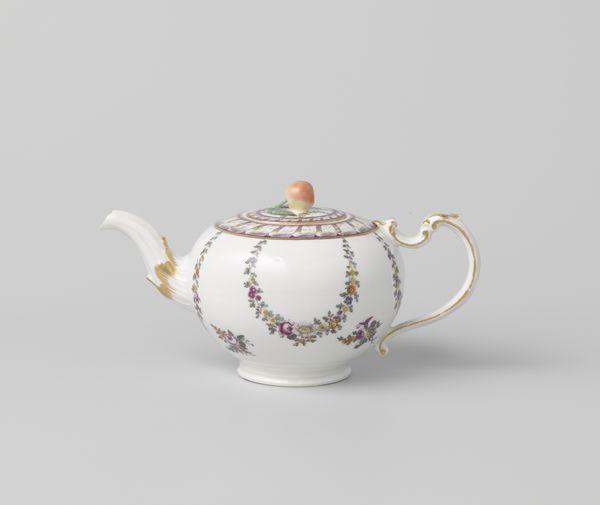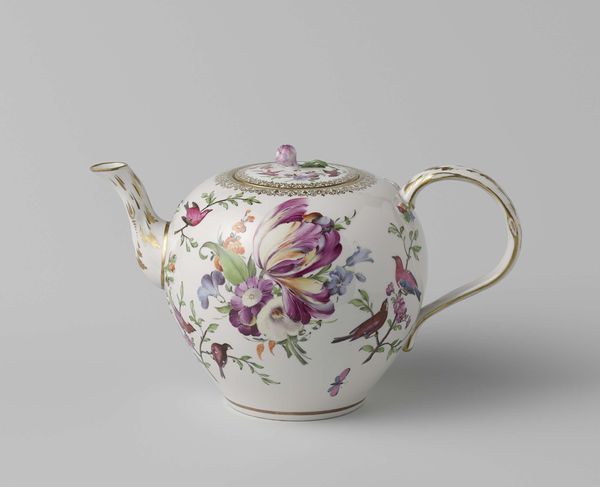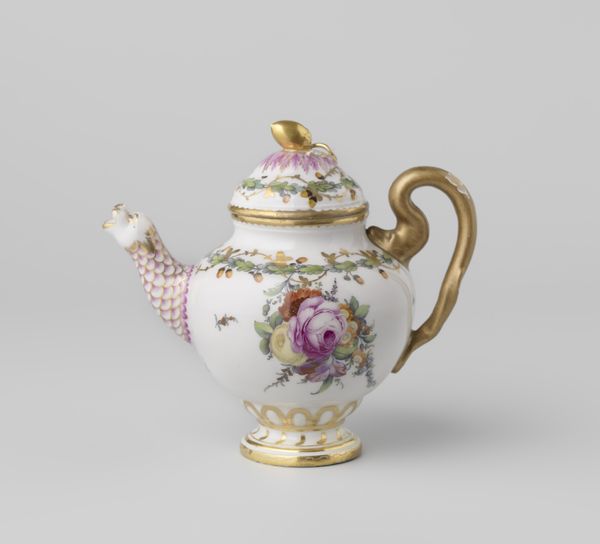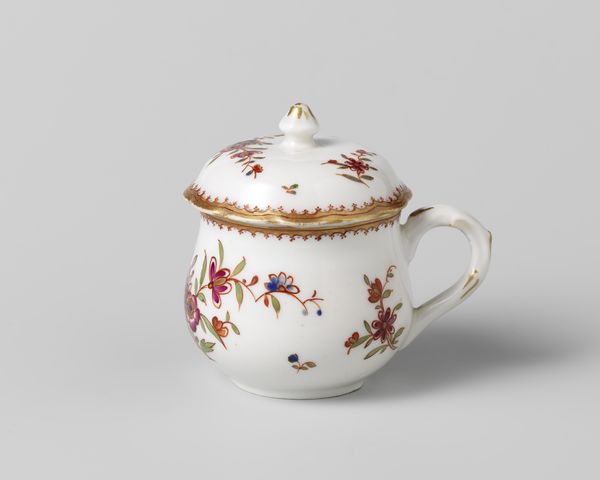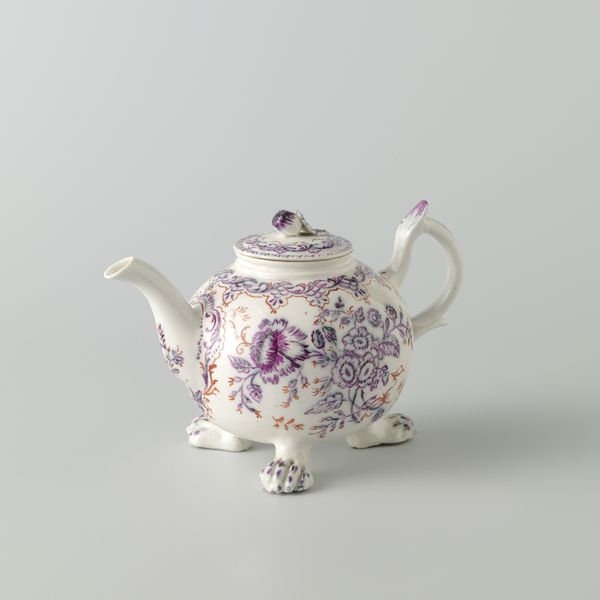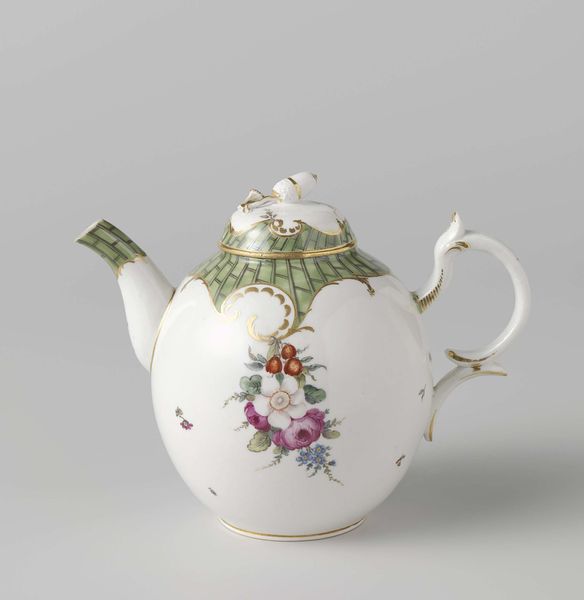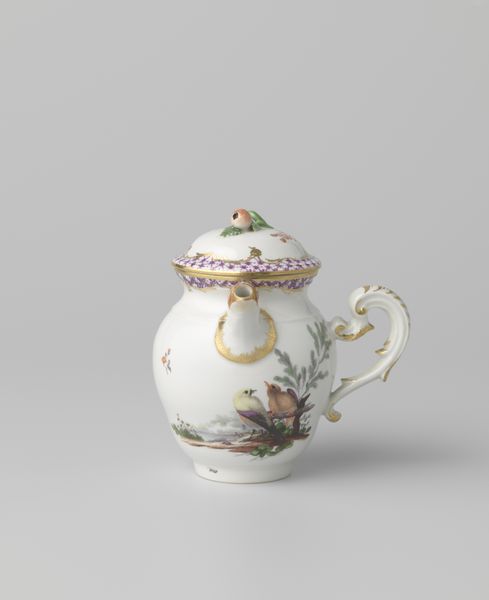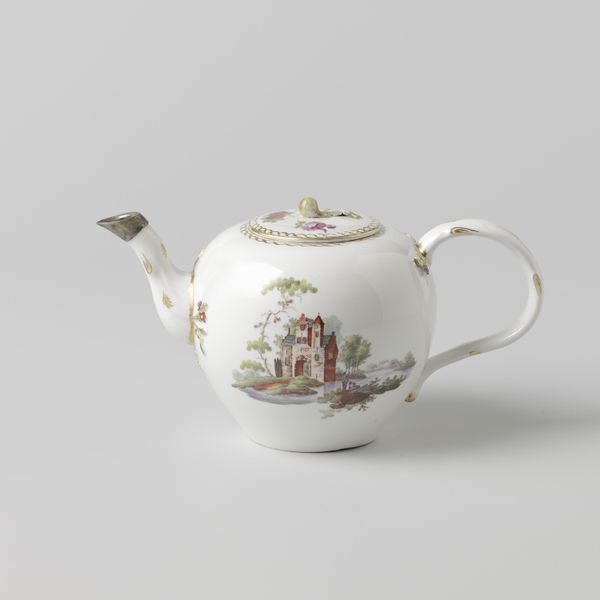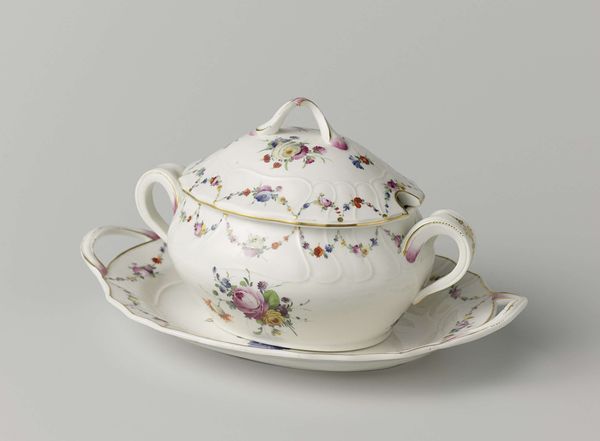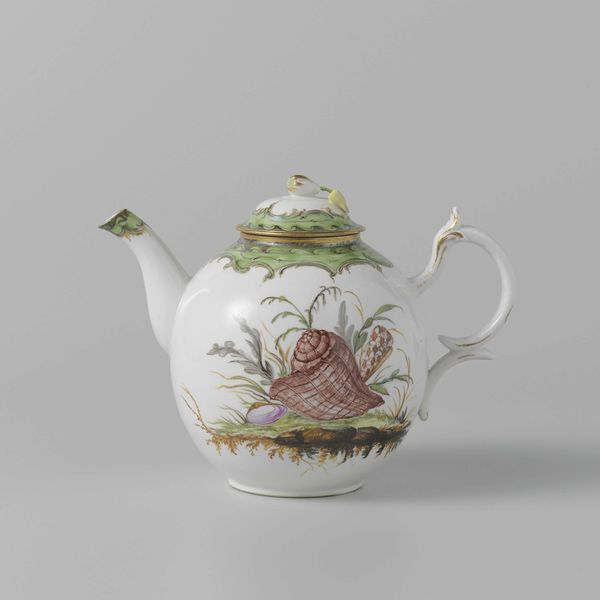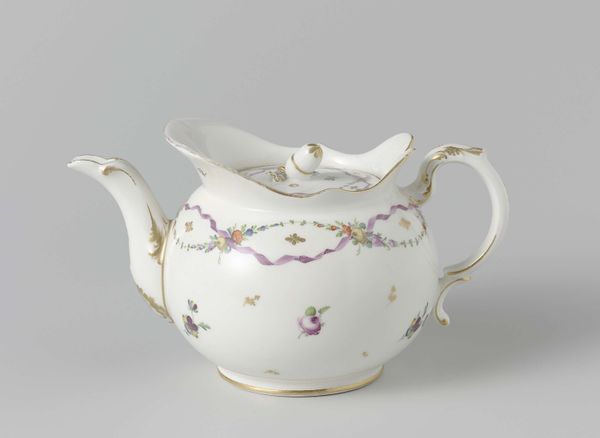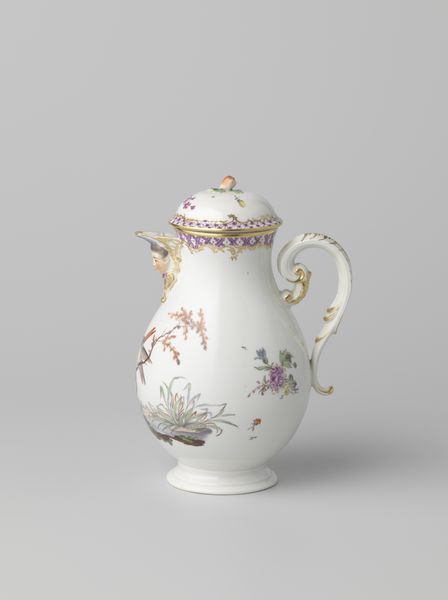
Dimensions: height 11.2 cm, width 17.3 cm, diameter 11.2 cm
Copyright: Rijks Museum: Open Domain
Editor: This porcelain tea service, dating back to around 1780, is just gorgeous. The floral painting seems so vibrant, yet also incredibly delicate. What strikes you about it? Curator: The tea service exists as a material witness to a time of shifting power dynamics, wouldn't you agree? Porcelain, in the 18th century, was symbolic of status and global trade networks fueled by colonialism. These "tête-à-tête," or "head-to-head," sets signified intimate conversation, but for whom, and at what cost? Who was excluded from this conversation, this luxury? Editor: That's a really interesting way to look at it; I hadn't considered that. I was just thinking about the romanticism of having tea. So the flowers and gold trim were not just decoration? Curator: Absolutely. Rococo style, with its asymmetry and naturalistic motifs, often served to mask the harsh realities of the era. Those beautiful hand-painted flowers perhaps softened the sharp edges of a society built on inequity. Ask yourself: Who grew those flowers? Who mined the materials for the porcelain and gilt? Editor: Wow, I feel like there is so much beneath the surface that I originally missed by seeing its prettiness at first glance. The intimate setting it proposes really speaks to a limited idea of inclusivity and privilege. Curator: Precisely! Art objects, like this tea service, are complex cultural artifacts reflecting, reinforcing, and sometimes even subverting the social norms of their time. Examining it this way opens up a crucial dialogue about our past and its continued impact today. Editor: I'll never look at a tea set the same way again. Thanks for broadening my understanding!
